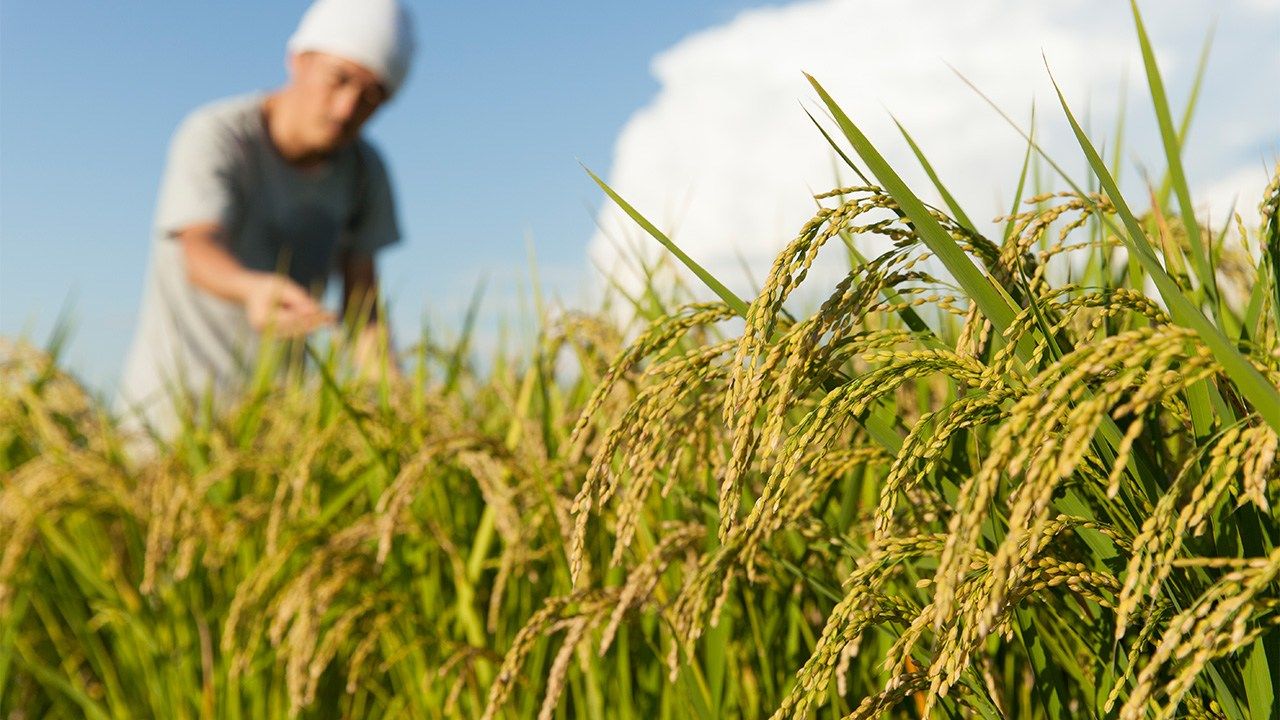
Japan’s Rice Farmers Planting More Heat-Resistant Varieties
Society Disaster Food and Drink- English
- 日本語
- 简体字
- 繁體字
- Français
- Español
- العربية
- Русский
In 2023, 46 varieties of heat-resistant rice, which are less susceptible to high summer temperatures, were planted in 39 prefectures across Japan, according to the Ministry of Agriculture, Forestry, and Fisheries. The total cultivation area for heat-resistant rice was 182,869 hectares, a 2.8-fold increase in size from 10 years ago, and the percentage grown for human consumption out of total crops reached 14.7%. These are both record highs.
Rice is native to the subtropics, and its cultivation in Japan has seen a long history of struggle with cold weather damage and a continued need to develop and cultivate cold-resistant varieties. In 1993, unusually low summer temperatures led to severe cold damage, mainly in the Tōhoku and Kantō regions, and rice had to be urgently imported from Thailand, the United States, and other countries.
Major Heat-Resistant Rice Varieties and Cultivation Areas in 2023
| Variety | Area (ha) | Major Growing Prefectures |
|---|---|---|
| Kinumusume | 22,549 | Tottori, Shimane, Okayama |
| Koshiibuki | 18,300 | Niigata |
| Tsuyahime | 17,823 | Miyagi, Yamagata, Shimane |
| Fusakogane | 11,612 | Chiba |
| Tochiginohoshi | 8,500 | Tochigi |
| Akisakari | 8,361 | Fukui, Hiroshima, Tokushima |
| Nikomaru | 7,913 | Shizuoka, Okayama, Nagasaki |
| Sainokizuna | 6,900 | Saitama |
| Genkitsukushi | 6,310 | Fukuoka |
| Sagabiyori | 6,220 | Saga |
Created by Nippon.com based on data from the Ministry of Agriculture, Forestry, and Fisheries.
In contrast, recent rice shortages are the result of extreme heat in summer 2023, which caused a fall in the quality of rice and amount that was distributed. A MAFF official stated that “the trend of higher temperatures is expected to continue due to global warming. There needs to be further development and cultivation of heat-resistant varieties.”

An ongoing survey on Nikomaru (right), a heat-resistant rice variety, at a Kyūshū Okinawa Agricultural Research Center farm in Chikugo, Fukuoka Prefecture, in August 2010. (© Jiji)
Recently, each rice-producing region has been developing its own varieties, and working on creating its own brands. The development of new varieties takes a long time though, so the MAFF official believes that “there may well be an increase in planting rice from other regions in order to quickly adapt to the extreme heat.”
(Translated from Japanese. Banner photo © Pixta.)

